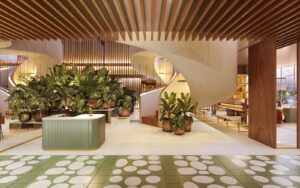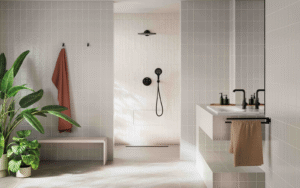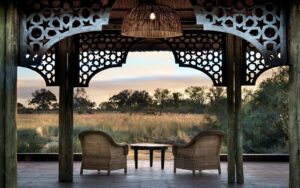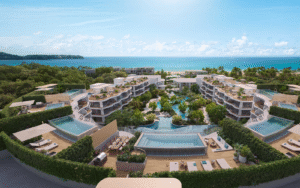For our latest roundtable, Editor Hamish Kilburn, in association with Geberit, sat down with a group of designers working in the hospitality industry, from boutique through to the brands, to discuss the changing demands being made on bathrooms in the hotel context and, importantly, how to harness both design and technology to enhance the guest experience…

A conversation fuelled by Geberit, our latest roundtable explores the changing shape of bathroom design, which inevitably brings into play certain touchpoints; the questions, concerns and the demands designers are required to balance when configuring a concept for what is, conventionally, the smallest space in the suite. Questions of technology, hygiene, sustainability and, of course, wellness all need to be considered and, inevitably, were part of this roundtable conversation. All these trends and considerations are now converging and having a direct impact on what has traditionally been the add-on space, that inconvenient design necessity behind closed doors. But those doors have been thrown wide open.
On the panel, expanding on all these points and more, were:
- Jane Landino, Creative and Design Head of Studio, Taylor Howes
- Lottie Suckling, Senior Interior Designer, Taylor Howes
- Kari Carter, Senior Interior Designer, Scott Brownrigg
- Maria Cheung, Head of Interior Design, Squire & Partners
- Raj Sonatra, CEO, KCA International
- Lee Thompson, Specification Sales Manager, Geberit
The roundtable conversation kicked off with a question looking directly at the role technology plays in the design of hotel bathrooms. What soon became clear is that the depth of technology varies as dramatically as budgets and design briefs – the bathroom design of one of London’s latest boutique hotels, Chateau Denmark, being a case in point. Design studio, Taylor Howes, took a refreshingly disruptive approach to the bathrooms, breaking several hospitality models in the process. The approach to technology was, again, typically unique – embracing it as part of the design rather than hiding it.
“The brief [for Chateau Denmark] was that the bathroom needed to be integral to the design, and in many cases is the focal point and hero,” explained Jane Landino, Creative and Design Head of Studio, Taylor Howes.
“In terms of technology, as music is a huge part of the narrative, sound and audio visual technology had to be embraced and made part of the design rather than hidden – something that is often counter-intuitive for a designer,” expanded Lottie Suckling, Senior Interior Designer, Taylor Howes.

Image credit: Chateau Denmark / Michael Franke
Moving from the boutique to the brand, Kari Carter, Senior Interior Designer at Scott Brownrigg pointed out that: “Technology is generally impacted on by budgetary constraints when working with the bigger brands, and as a result is often less visible. Technology in these situations comes on board as a function rather than as part of the guest experience.”
Shifting from technology to sustainability, Kilburn picked up on this and pointed out that technology is not just about the dials and screens but, in many cases, is becoming about what is going on behind the tiles. With this in mind, the designers around the table were asked if this was increasingly becoming more of an undertone to a design brief.
“Sustainability and reducing carbon footprint are all becoming increasingly important and the big brands are – rightly so – pushing this side of things when it comes to bathroom design,” said Raj Sonatra, CEO, KCA International.
Continuing on the subject of sustainability and water consumption, Lee Thompson, Specification Sales Manager at Geberit agreed that this was a definite focus when it came to product design. “Together with hygiene,” he said, “these have become the key concerns in terms of bathroom product design, and ensuring that we are designing for the future. Geberit’s shower toilets are an example of how we strike the balance between designing for wellbeing, hygiene and sustainability. These toilets incorporate a range of smart features including an oscillating wash and our AquaClean Sela, for instance, uses 50 per cent reduced water.”
Thompson went on to discuss that these concerns are being integrated into designs across the board rather than one dimensionally, or in a single product. What materials are being used, how the design functions to reduce water flow, as well as touchless and intuitive designs are just some of the issues being faced by bathroom product designers – and then of course things have to look good too! All these points reiterate the idea that the technology behind the scenes is, in many cases, becoming more important than what is on display.
Conversation moved from the practical to the more design-focused realm of the hotel bathroom. With both boutique and brand models increasingly blurring the boundaries between the bathroom and the guestroom experience, it was agreed that one of the most fundamental shifts in hotel bathroom design is the increased importance of a more cohesive design language between spaces. As Carter added: “creating a lack of boundary between elements also creates the illusion of space.”

Image credit: Geberit
In many cases the bath has, quite literally, moved into the bedroom which then opened up discussion onto the separation of space and function. Maybe it is time to look critically at how both the guestroom and the bathroom is being used. As Sonatra stated: ” It is time to take the bath out of the room.”
As bathroom expectations evolve, this is being reflected in how the space is both defined and designed. Looking at how to differentiate between bathing, wellness and practical ablution can allow for a more imaginative configuration of space and, once again, comes back to the concept of blurring lines in the hotel guestroom.
“It is interesting to question how you prioritise the space in the hotel room – do you prioritise the bathing or the sleeping aspect,” was a question thrown into the mix by Maria Cheung, Head of Interior Design, Squire & Partners. “Placing the bath in the hotel room is fantastic as it is not something you necessarily have the time and leisure for at home – having the bath within the sleeping area, in many cases with the hero view, can be that defining difference, immediately creating a more luxurious guestroom experience.”
To accommodate the increasing demands being put on the bathroom space in the hotel there is a concurrent increase of space being allocated to the bathroom within the design. The bathroom footprint is getting marginally larger but it has to work a whole lot harder. “The proportions of the hotel guestroom are changing,” expanded Sonatra. ” Almost 45 per cent of the room space is now taken up by the bathroom but, at the same time, that space needs to offer a lot more.”
Guest expectations on both a design and experiential level of the hotel bathroom have become a lot higher, especially in those family or resort style hotels where the trend is towards the longer stay. We are going on holiday to relax and recharge, and the bathroom is no longer just a practical space, but needs to have a pretty face as well – again working harder – and, a point rapidly agreed on by the panel, these increased demands are not always met with an increase in budget.
“The design focus on the bathroom varies hugely depending on both budget and target audience,” agreed Cheung. “Working with a brand like Bulgari, for example, as a luxury brand the bathroom becomes key and is clearly linked to the concept of luxury.”
Throwing open the discussion onto the wellness trend, the question was asked if this is a trend that is here to stay or simply a passing post-pandemic phase? With a general consensus that wellness is indeed a permanent design fixture, the panel dug a little deeper into the subject, agreeing that as guests are increasingly demanding a more holistic guest experience, the bathroom is key to that.
“The wellness trend is no longer the realm of high-end spa hotels, but is trickling down from high-end to mid-range hotels,” said Carter. “We are increasingly seeing hotels which are not necessarily wellness brands, introducing aspects of it into their offerings – in some case this is with the introduction of opt-in wellness guestrooms.”
“Wellness is not really a trend anymore,” added Thompson, ” but a more holistic expectation from a holiday or hotel experience.”
Cheung expanded on the holistic approach to wellness and connecting it clearly to sustainability. “When you enjoy an experience in a wellness hotel, those hotels can, and possibly should, extend that and have a role to play in the educational and information aspect of the design purpose, relating wellness clearly back to sustainability and water use,” she noted.
From wellness to hygiene in one swift step – both are trends emerging out of the experience of last few years and both, it would seem, are here to stay on the design agenda. While hygiene questions might be a little less focused as we move on, it was felt that expectations remain high. From toilets to taps, touchless technology is increasingly being seen as the norm. Key to the successful introduction of technology is that it remains, on the face of it, both simple and intuitive. In addition, the intervention of technology to facilitate water saving in the bathroom becomes more acceptable to the user as well.
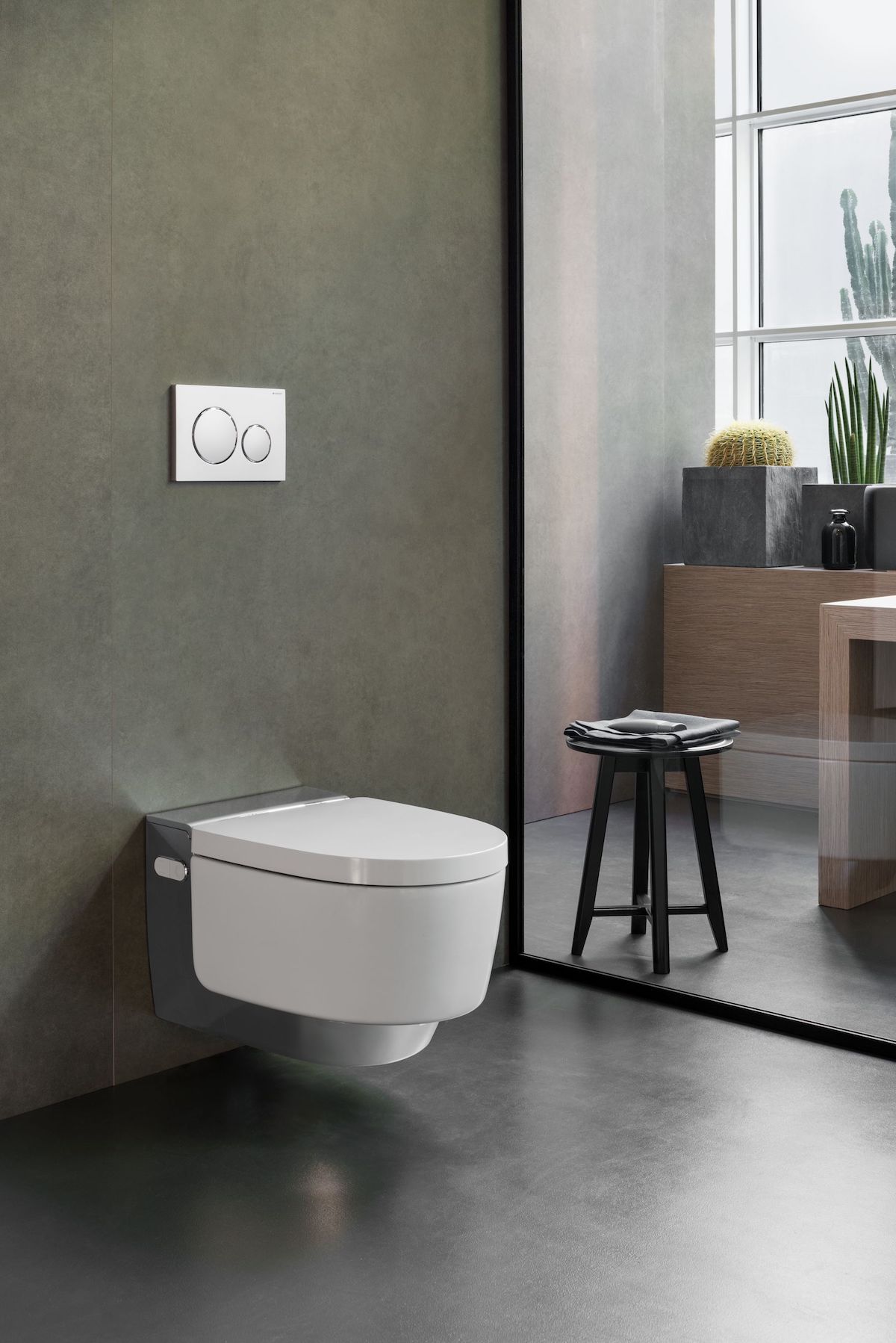
Image credit: Geberit
The question of surfaces, texture and tactility within the bathroom soon came under discussion. While wellness and spa-like environments lend themselves to an element of texture, hygiene demands remain high. Described by Carter as a “post-pandemic duality”, while attracted to tactile surfaces and interfaces, the bathroom design default tends to be smooth surfaces and touchless controls.
In conclusion, Kilburn asked: “Should we be injecting more personality into the bathroom, or by doing this are we reducing the longevity of the design and therefore impacting on sustainability?”
“It is definitely important to focus on the longevity of key elements and the other components need to be relatively neutral to accommodate a soft refurbishment,” added Sonatra.
Again Chateau Denmark stood out as an exception to the rule with an over-the-top design intention. “The narrative is so strong it goes beyond trend and should maintain a design relevance,” Landino asserted.
On pushing the boundaries of bathroom design, Carter concluded by saying: “We are always trying to design timeous interiors, and there is definitely room for bathrooms in the hospitality arena to have a little more character.”
The conversation around this roundtable identified the hotel bathroom as an area of both shifting boundaries and expectations, and a space that is open to a lot more design innovation and consideration as hotels take on board the changing expectations of guests on both a functional and an aesthetic level. Taking the conversation further, Geberit’s report on Sensory Design picks up on several of these considerations when looking at how to enhance the bathroom experience in the hospitality arena. The bathroom is clearly an opportunity to inject both character and authentic experiences into the hospitality model, and design and technology will no doubt be working in tandem to take us on this path.
Geberit is one of our Recommended Suppliers and regularly features in our Supplier News section of the website. If you are interested in becoming one of our recommended suppliers, please email Katy Phillips.
Main image credit: Geberit








